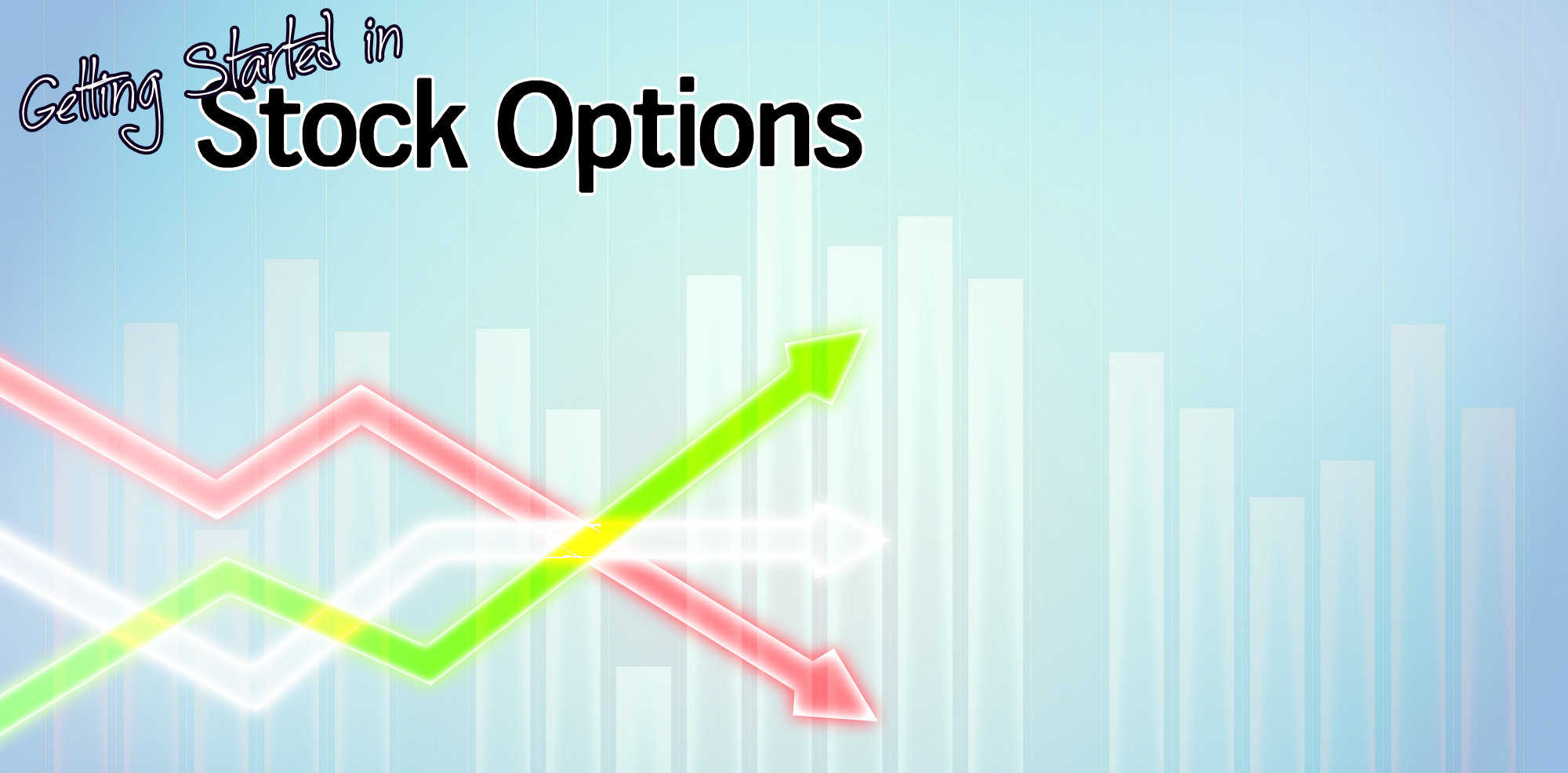
by John | Mar 21, 2017 | Cryptocurrency, Currencies, Learning from Mistakes, Personal Journey
I wrote back in June of 2016 in an article Ethereum Cloud Mining is Not Profitable. Today is exactly 1 year since I purchased an Ethereum cloud mining contract at Hashflare.io. As I recapped in that article:
In order to simply break even ETH would need to trade up to around 18.7 USD.
I would also be better off if I had just bought ETH.
That article was written about 3 months after I had made the investment in Ethereum Cloud Mining.
I wish I had done the in depth analysis in that article before I made the investment in Ethereum Cloud Mining so that I would have known not to make the investment.
And that is the lesson I learned:
Perform your due diligence before making an investment!

An artist’s representation of how I envisioned Ethereum Cloud Mining would go
I attempted due diligence but I did not consider all the relevant facts. These relevant facts were available to me at the time if I had known to look for them.
Since my mining contract is up I want to recap what actually happened with the benefit of all the facts.
The main beneficiary of my bad experience is anyone who is newly considering Ethereum Cloud Mining: caveat emptor.
There might be other cloud mining services out there that are profitable but in my experience Hashflare.io was not one of them.
Ethereum Cloud Mining Recap
On 21 march 2016 I spent $561 for a cloud mining contract at Hashflare.io. Ethereum was trading at $10.81 at the time. In the one year of mining I mined 41.27 Ethereum. As of writing Ethereum is currently trading at $42.6.
Source: http://coinmarketcap.com/currencies/ethereum/
So that 41.27 Ethereum would be worth $1,758 if I had held onto all of them and then sold today.
This is a $1,197 gain which sounds nice but it really isn’t and I’ll explain why.
Why a $1,197 Gain Wasn’t Very Good
But what if the price of Ethereum had not gone up 294%?

An artist’s representation of how Ethereum Cloud Mining actually went
What if it had stayed the same price of $10.81. Those 41.27 Ether I mined would be worth just $446.
What does that mean?
It means: The gain was entirely due to the increase in the price of ETH–the mining itself was not profitable.
In fact, if I had taken $561 and just purchased Ethereum directly, I could have acquired 51.89 Ethereum, which at current prices of $42.6 would now be worth $2,210 or a gain of $1,649.
So other than sounding cool Ethereum Cloud Mining through HashFlare.io provided no value.
The Problem with my Analysis
The downfall of my analysis when initially evaluating the investment in Ethereum Cloud Mining was assuming linear growth in hashing power of the Ethereum network.
I explain this in more detail in my original article and I also provide a process for making more accurate predictions wether a cloud mining contract will be profitable or not. Using that process I predicted I would mine about 30 ETH.
This prediction was much closer to what I actually mined compared to the 120 ETH predicted using static models.
It was a tough lesson to learn but thankfully the amount at risk was relatively small at $561.

by John | Aug 31, 2016 | Active Monthly Income, Options, Wealth Protection
Do you want to get started trading options?
What are options and how are they useful?
An option is a contract that gives the buyer the right, but not the obligation, to buy or sell an underlying asset at a specific price on or before a certain date. An option, just like a stock or bond, is a security. It is also a binding contract with strictly defined terms and properties.
Source: http://www.investopedia.com/university/options/option.asp
If that seems like a foreign language don’t worry. I’m going to break down what that means and provide an example to illustrate one way options are very useful.
If you buy a put option you have the right (but not the obligation) to sell a stock at a given price within a given timeframe. The put option seller has the obligation to buy the underlying stock from you at the given strike price, provided it is exercise before the expiration date. The seller gets a premium for providing this “insurance”.
Additionally you can buy what’s known as a call option where you have the right (but not the obligation) to buy the underlying stock at given price within a given timeframe. For the privilege of this “option” you pay a premium. On the other side of this option contract is an option seller who has the obligation to sell you the underlying stock at the strike price at any time before the contract expires if you choose to exercise the option.
Aren’t Options Risky?
I’ve been trading options for around a year now. They can enable an inexperienced trader to lose money fast. However with the right education trading options is a great way to generate active monthly income.
I’d like to use an analogy to explain the risks of trading options.
Say you know how to drive an automatic transmission car in the US. But now you’re in a hilly and busy part of Britain and you’ve got a stick shift car. You’ve never driven a manual transmission car before, you’re not familiar with the area you’re driving and you don’t know the rules of road.
It’s going to be bad. Very bad.
But if you practice driving “stick”, learn the rules of road in Britain (like driving on the left side of the road, etc), don’t take too many risks and learn the area you’ll be driving in, a manual transmission automobile is an excellent and safe way to get around Britain. There are still risks but if you’re careful they will be small and rare.
If trading stocks is like driving an automatic car in one’s home country. Trading options is like driving a manual car in a foreign land.
Trading Options Can be Profitable
Unfortunately I’ve learned this the hard way. I thought, “I’m a smart guy and I’ve been trading stocks for a long time, I’ll jump into options!” As a result I lost a lot of money.
I have been interested in options for a long time and was devoted to finding a way to make money with them.
I believe that I’ve found a trade methodology that is profitable in the long run. In fact in August, making my own option trades, I’ve brought in $120 using an account that is roughly $8,000 in size. That’s a 1.5% gain in just a couple weeks.
I link to a free option education resource that I highly recommend later in this article. I’ll also be sharing the trades I made in August in a different post.
Tell me more about Stock Options!
I’d like to contrast options to stocks, since more people are familiar with stocks.
When buying stocks you want to buy low and sell high. You might also be interested in the dividend the company pays to shareholders. With stocks the name of the game is if the stock goes up or down.
Options are a different animal. Yes, direction matters, but option pricing is also a function of the time to expiration (the given timeframe you have to exercise the option) and implied volatility.
As it pertains to stock options volatility is how much the underlying stock price moves up or down within a given timeframe. For example, a stock that goes down in price 50% and then up in price 100% over a period of two days is more volatile than a stock that goes down 10% and then up in price 20% over a period of two days all else given.
Understanding volatility and how it impacts option pricing is arguably the most important difference between trading stocks and trading options.
Purpose of Options
But why even buy options?
You can use options to speculate (using leverage) on the direction of a stock up or down. You can use options to open or close a long stock position. You can also sell options to gain a premium depending on if you think a stock will go up, down, or sideways. I think of selling options as selling insurance.
Another reason for buying options is to hedge a position. Let’s dive into the example to explain how you can use options to hedge a position.
Let’s say you own a stock you think will go down $16 in value, but you don’t want to sell it (and pay commissions and potentially have a taxable event). You could buy a put option. A put option to protect a stock position is like buying insurance against losses.
An Example
For example lets say you own 100 shares of Apple stock (AAPL). AAPL is currently trading at around $106. Lets also say you think that the September 7 Apple event is going to disappoint and that the stock is going to go down to $90 per share. (This is just an example and should not be construed as my opinion on Apple, next iPhone, or stock movement.)
Lets also say you bought AAPL when it was trading at $50 and you don’t want to sell your stock at this time and have to pay taxes on $50 per share in gains.
Current theoretical AAPL position
Current AAPL value: $106 per share x 100 shares=$10,600
Cost: $50 per share purchase price x 100 shares=$5,000
Unrealized Gain/Loss: $5,600
If AAPL were to drop to $90
New AAPL value: $90 per share x 100 shares =$9,000
New Unrealized Gain/Loss: $4,000
So if you’re right and AAPL does drop to $90 per share you’re going to give up $1,600 in unrealized gains. (Unrealized just means you haven’t sold the stock and realized the profits yet.)
In order to hedge (or insure) your AAPL position you could go out and purchase a put option that expires on 16 September with a strike price of $106. One such option costs as of writing $1.77 and lets you sell up to 100 shares at a price of $106 for a total cost of $177 ($1.77 x 100).
So again lets say you bought the $106 strike price put option for $177 and AAPL does drop down to $90 on 8 September.
You’re gain/loss on the stock would be the same, $4,000. But you’d have the option to exercise your put option and sell AAPL at a price of $106. If you did that you’d keep your AAPL gains, less $177 paid for the put option.
So your gains would be $5,432 once you exercise the option and take into account that you paid $177 for the option.
Now the downside is that if AAPL doesn’t drop down $1.77 you are better off NOT exercising the option and you’d have paid $177 for nothing except peace of mind.
So buying a put option to protect a stock position can be thought of like homeowners insurance. You hope you don’t have to use it, but if your house catches fire and burns down you’re glad you have it.
Now I mentioned before one of the reasons for buying the option to lock in gains was so you wouldn’t have to sell the stock. Exercising the option is one choice but that still creates a taxable event.
If AAPL were to drop down to $90 the intrinsic value of the option would be at least $16 per share. Because the option contracts come in lots of 100 that option would now be worth somewhere around $1,600. In reality the option would likely be worth even more depending on the implied volatility, time decay and a lot of other complex factors beyond the scope of this article.
The point is you could sell the put option for a $1,600 profit, without ever exercising it, and never touch your stock position.
An Excellent Free Resource to help Get Started Trading Options
To learn more about options I highly recommend OptionAlpha.com. OptionAlpha.com is run buy a guy named Kirk DuPlesis. I’ve never met him in person but we’ve exchanged emails and he is a great guy.
Disclaimer: I am not compensated for recommending option education at OptionAlpha.com.
Kirk has created dozens of training videos that are available for FREE.
Not only are the videos 100%, no-catch, FREE, but watching these videos are one the best ways to learn about options and how to trade options.
The OptionAlpha website and podcast have been very valuable resources for me and I’ve paid for some of Kirk’s more advanced information, like his trade alerts and stock watchlist.
I think Kirk is giving away tons of high quality information for free because once you see how much value you get from his free materials, you’ll be very likely to buy some of his other paid services.
Again, I don’t gain anything from Kirk or OptionAlpha.com by recommending you visit his site. It is a valuable resource that I’ve taken advantage of that I want to share with my readers. I wish I had known of OptionAlpha.com to help me get started trading options. It would have saved me a lot of money and allowed me to avoid a lot of mistakes.
Options can be very risky if done incorrectly. Trading and selling options is not right for everyone. If you decide to learn more about options, get educated at places like OptionAlpha.com, paper trade for a long time, and keep your position size small.
I’ll be posting another article later in the week with the option trades I made in the later half of August to make $120 with an $8,000 account. I’m still an option trading neophyte and I don’t recommend anyone trade options without first considering your risk tolerance and investment objectives. Get educated and make your own decision.
I just want to share one of the things I’m doing to grow my wealth.

by John | Jun 16, 2016 | Capital Appreciation, Passive Income, Preservation of Purchasing Power, Real Estate
Buying Rental Property and Real Estate has helped create many a millionaire. Robert Kiyosaki, Barbara Corcoran, and even Donald Trump amassed fortunes via Real Estate.
Buying rental property is an investment that hits on three out of five of my Investment Goal Categories: Capital Appreciation, Preservation of Purchasing Power and Passive Monthly Income.
At it’s most basic level, investing in rental property consists of buying a property and then renting it out to gain monthly income.
I don’t directly own any rental property at this time but it is an area I’m investigating and learning more about.
Buying Rental Property has Five Great Benefits
1) Passive Monthly Income (Cashflow)
2) Equity Build-Up
3) Leverage Utilization
4) Very Favorable Tax Benefits (in the US)
5) Appreciation
Let’s explore the five benefits of buying rental property.
Passive Monthly Income
 In many areas it’s feasible to purchase a rental property that generates positive cashflow each month. Even after making a monthly mortgage payment, taxes, fees and maintenance expenses, a good rental property can be have net positive cashflow from the rent payments of the tenants.
In many areas it’s feasible to purchase a rental property that generates positive cashflow each month. Even after making a monthly mortgage payment, taxes, fees and maintenance expenses, a good rental property can be have net positive cashflow from the rent payments of the tenants.
This meets one of my investment goal categories of passive monthly income.
Equity Build-up
Many banks will loan qualified persons enough money to purchase a rental property but typically require a 20-30% down payment. By renting the property you can use the rental income to pay the mortgage and continue to build equity in the property until you own it outright.
With equity in a property you have the option to choose between selling the property, taking a loan out on the property and re-mortgage it, or simply hold onto the property and continue to enjoy the monthly income.
Leverage Utilization
By taking out a loan to buy a positive cashflow rental property you are leveraging the capital you have to make more money. For example by using $16,000 for a down payment you could purchase an $80,000 property and rent it for $600 per month. Lets say after making the mortgage payments, paying property taxes, and other expenses, you are bringing in $150 per month in cashflow. At the end of the year that $150 monthly income would be $1,800 from a $16,000 investment, or over an 11% return. And that doesn’t even include the increase in equity.
Because of the use of leverage, price inflation actually reduces the cost of the remaining loan balance over time. This combined with the universal human need (and hence demand) for shelter even when the economy is not performing well makes buying rental property a great investment for preserving purchasing power.
Tax Benefits
I’m not a CPA or tax advisor, but I understand that when it comes to investment properties, mortgage interest, depreciation of the property, and other expenses that go into maintaining the property are tax deductible. Often times the 11% profit can be made tax free because of all the deductions the tax code (at least in the US) provides to real estate investors.
Appreciation
Partly due to price inflation, partly due to an increasing population and demand for housing, real estate prices tend to rise. So it is possible to grow wealth because the value of the property has gone up. While this is more on the speculative side of the housing and real estate market, appreciation can be a very nice bonus.
This meets one of my investment goals of capital appreciation as well as preservation of purchasing power.
What has stopped me from Buying Rental Property in the past?
- Capital I need money for a down payment. Most of my savings go into stocks and I want to buy a rental property with new money. So I’m going to start earmarking money for buying rental property. While it might be possible to buy a property with zero down I think this is reckless and irresponsible. It’s a good way to find yourself underwater on your mortgage. By making a 20% down payment you can weather a 20% drop in the value of the property and still be even in terms of equity. Plus if the property is cashflow positive, even if you are not making money via appreciation, you can still make money via cashflow and equity building.
- Knowing how to make an offer I would like to better learn how to coordinate having a loan pre-approved with making the offer. With real estate you have to be able to move quickly. In some markets if you go eat lunch to think it over the property will be sold by the time you get back.
- Maintenance Costs and Expenses If you know purchase price of a property and how much you can rent it for (by looking at similar properties being advertised in the same area) and what your costs are going to be you can determine if a property will be profitable (or not). However, I find the most difficult part to research is estimating maintenance costs. The hot water heater breaks, furnace needs repair, a crazy tenant tears up the place, etc. As someone who has been a renter all his life I don’t have a good sense of how much I need to budget for maintenance costs for a rental property. These costs are a huge factor in the profit and loss calculations.
There are five great reasons why real estate investing is a superb way to build and grow wealth. I’ll be sharing my progress in the coming months as I continue to learn more about real estate investing.

by John | Jun 2, 2016 | Learning from Mistakes, Passive Income
Ethereum Cloud Mining on Hashflare.io is a losing investment. It is more profitable to simply buy Ether on an exchange.
(more…)

by John | May 26, 2016 | Passive Income
There are many excellent passive income ideas. A favorite is bitcoin arbitrage. It also provides diversification out of the dollar.
What is Passive Income?
Passive Income is great.
Passive Income means I’m not trading time for money and is a key to growing wealth.
This is one of my passive income ideas that does not require a lot of money. Naturally the more money you invest, the more potential to make (and lose) money, but one of the themes of HowIGrowMyWealth.com is that I’ve been able to do these things without a lot of money.
Now this method is somewhat high risk and while I’ve determined it makes sense for me I can’t advise anyone to invest using this tactic.
Do your research and make your own decisions with the help of your certified and licensed financial advisor.
Okay, let’s jump into what I do to generate Passive Monthly Income Outside of the Dollar.
One of my best Passive Income Ideas
Two key terms we’ll need to define first. One is Bitcoin and the other is arbitrage.
Bitcoin
Bitcoin is a decentralized cryptocurrency and is defined as follows: “a type of digital currency in which encryption techniques are used to regulate the generation of units of currency and verify the transfer of funds, operating independently of a central bank”.
That’s a lot of technical jargon but don’t get discouraged. Basically it is an online medium of exchange (like dollars) except it isn’t controlled by the government or a central authority like a bank.
While new Bitcoins are still being “mined” into existence on a regular basis the total number of Bitcoins that will ever exist is capped at 21 million. Bitcoin is a deflationary currency which benefits savers.
Bitcoin has a lot of potential as a technology to pay for things online.
Arbitrage
The second term I mentioned is arbitrage, which is defined by Investopedia as: “the simultaneous purchase and sale of an asset in order to profit from a difference in the price.”
Source: http://www.investopedia.com/terms/a/arbitrage.asp
An example of arbitrage would be: you know someone wants to buy a specific make and model of car and is willing to pay $5,000 for it, and you know that exact make and model of car is for sale for $4,500, you could buy the car for $4,500 and turn around and sell it to the other buyer for $5,000 for a $500 profit.
Bitcoin Arbitrage
There are a variety of bitcoin exchanges.
I personally use CoinBase to buy bitcoin and if you sign up for an account using this link and fund your account with at least $100, we’ll both get $10 worth of bitcoin bonus. Win-win.
But I don’t try to buy and sell bitcoin on a variety of exchanges myself, I utilize a bitcoin arbitrage service.
What is Bitcoin Arbitrage?
You may already have put two and two together, the prices of Bitcoin vary on different exchanges and by simultaneously buying and selling bitcoin on different exchanges one can take advantage of the price difference.
The price differences are generally small, so in order to be profitable one would need to make many trades per day in order for it to amount to a significant gain.
You can setup “bots” that perform the arbitrage for you, this isn’t something I’ve tried, but that is an option I’ve read about.
What I do is use a free arbitrage service offered at a bitcoin exchange that provides over a 10% yearly return, this arbitrage service is run by the founder of an exchange that I have personally interacted with and trust.
I didn’t understand why the founder of this exchange would offer a free arbitrage service.
But he does so in order to attract new accounts and he advised me that the arbitrage opportunity would probably not exist forever, so he is interested in getting people to sign up for accounts so that they will use his exchange to trade Bitcoins in the future.
Bitcoin is a risky and new technology. Bitcoin is volatile, meaning it makes large swings up and down. Since it’s inception in late 2011 it has gone from pennies to $1,200 and is now trading around $450. It has been more stable in 2016, trading roughly within a $100 range between $400 and $500.
Despite the volatility I like the arbitrage service because it allows me to win in several different ways.
1) If the price of bitcoin goes up, the value of the arbitrage service I’ve bought into goes up
2) If the price of bitcoin stays relatively stable, I still make money via arbitrage
3) It’s diversification outside of the dollar and legacy financial system
For me, Bitcoin and the arbitrage fund is very risky, so I’ve only allotted a small amount of my total assets and I assume there is a good chance I could lose all of it.
The arbitrage service I use does pay over a 10% return, has upside potential, and is fairly liquid, so I believe it has a place in my portfolio.
I think it is one of the better passive income ideas you’ll find.
I wrote a previous article about my Five Investment Goal Categories; bitcoin arbitrage hits on all five: Preservation of Purchasing Power, Capital Appreciation, Monthly Income, Geopolitical Risk Protection, and Liquidity.
I’ve recently increased my allocation to this arbitrage service to about 3% of my overall investment portfolio, which I believe is too high and would like to reduce that down to around 1%, because again, Bitcoin is risky.
On the whole I have about $145 in unrealized arbitrage earnings since I first started in July of 2015.
To get the name of the arbitrage service I use and recommend simply sign up for my free Newsletter. Your privacy is 100% guaranteed, I never share your information with ANYONE, I hate spam as much as the next person and you can opt out at any time, no questions asked.
Bitcoin Arbitrage is a way to generate monthly income, with over a 10% yield, you could invest $100 and have $110 in a year, with the added opportunity (and risk) of bitcoin appreciating in value (or depreciating).
Don’t miss out on my other passive income ideas found only on HowIGrowMyWealth.com! Join my Newsletter using the form above!






 In many areas it’s feasible to purchase a rental property that generates positive cashflow each month. Even after making a monthly mortgage payment, taxes, fees and maintenance expenses, a good rental property can be have net positive cashflow from the rent payments of the tenants.
In many areas it’s feasible to purchase a rental property that generates positive cashflow each month. Even after making a monthly mortgage payment, taxes, fees and maintenance expenses, a good rental property can be have net positive cashflow from the rent payments of the tenants.
